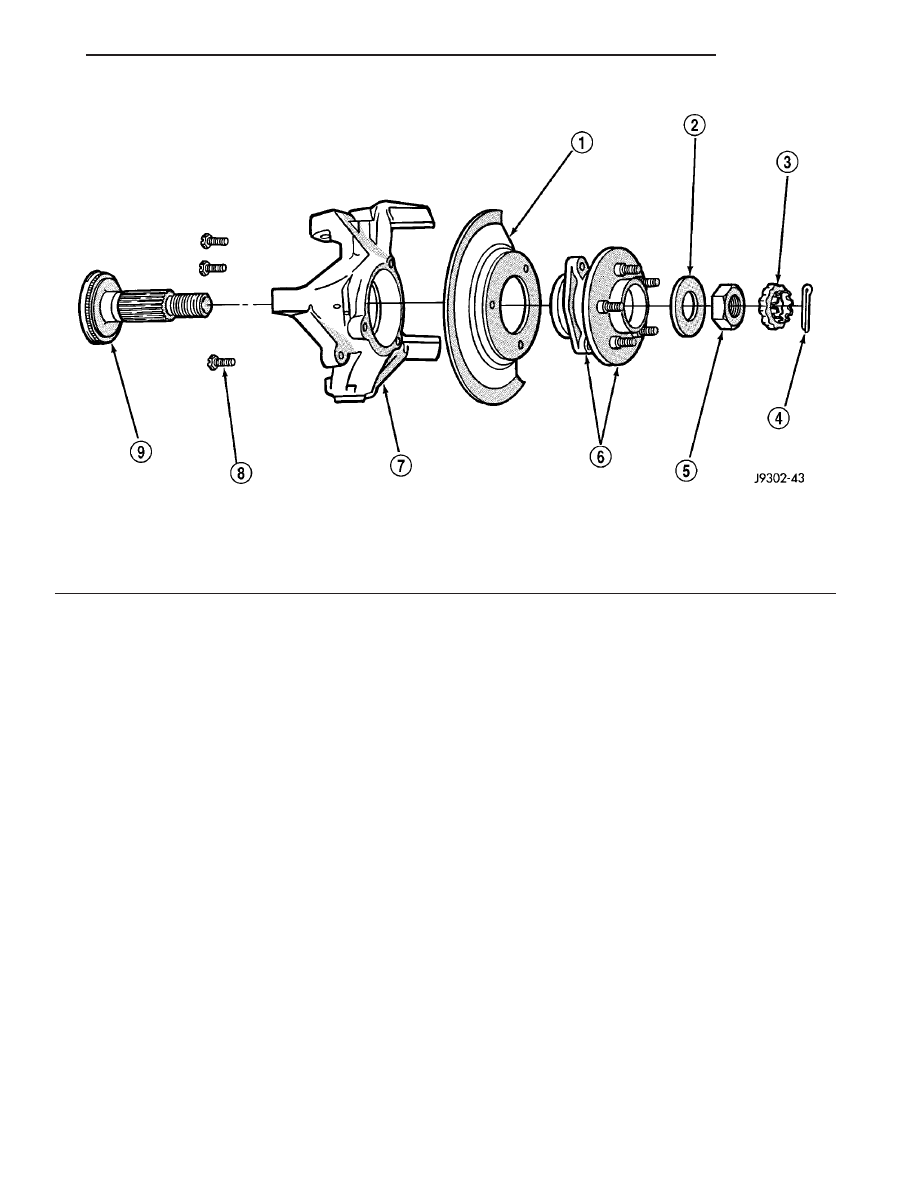Jeep Wrangler TJ. Manual - part 203

OPERATION
The hub/bearing assembly is mounted to the steer-
ing knuckle and is retained by three mounting bolts
accessible from the back of the steering knuckle. The
hub/bearing unit is not serviceable and must be
replaced as an assembly if the bearing or the hub is
determined to be defective.
REMOVAL
(1) Raise and support the vehicle.
(2) Remove the wheel and tire assembly.
(3) Remove the brake caliper, rotor and ABS wheel
speed sensor, (Refer to 5 - BRAKES/HYDRAULIC/
MECHANICAL/ROTORS - REMOVAL).
(4) Remove the cotter pin, nut retainer and axle
hub nut (Fig. 3).
(5) Remove the hub bearing mounting bolts from
the back of the steering knuckle. Remove hub bear-
ing from the steering knuckle and off the axle shaft.
INSTALLATION
(1) Install the hub bearing and brake dust shield
to the knuckle.
(2) Install the hub bearing to knuckle bolts and
tighten to 102 N·m (75 ft. lbs.).
(3) Install the hub washer and nut. Tighten the
hub nut to 237 N·m (175 ft. lbs.). Install the nut
retainer and a new cotter pin.
(4) Install the brake rotor, caliper and ABS wheel
speed sensor, (Refer to 5 - BRAKES/HYDRAULIC/
MECHANICAL/ROTORS - INSTALLATION).
(5) Install the wheel and tire assembly. (Refer to
22 - TIRES/WHEELS/WHEELS - STANDARD PRO-
CEDURE).
(6) Remove support and lower the vehicle.
Fig. 3 Hub Bearing & Knuckle
1 - BRAKE SHIELD
2 - WASHER
3 - RETAINER
4 - COTTER PIN
5 - NUT
6 - HUB AND BEARING ASSEMBLY
7 - STEERING KNUCKLE
8 - BOLT
9 - TONE WHEEL (ABS)
TJ
FRONT
2 - 9
HUB / BEARING (Continued)